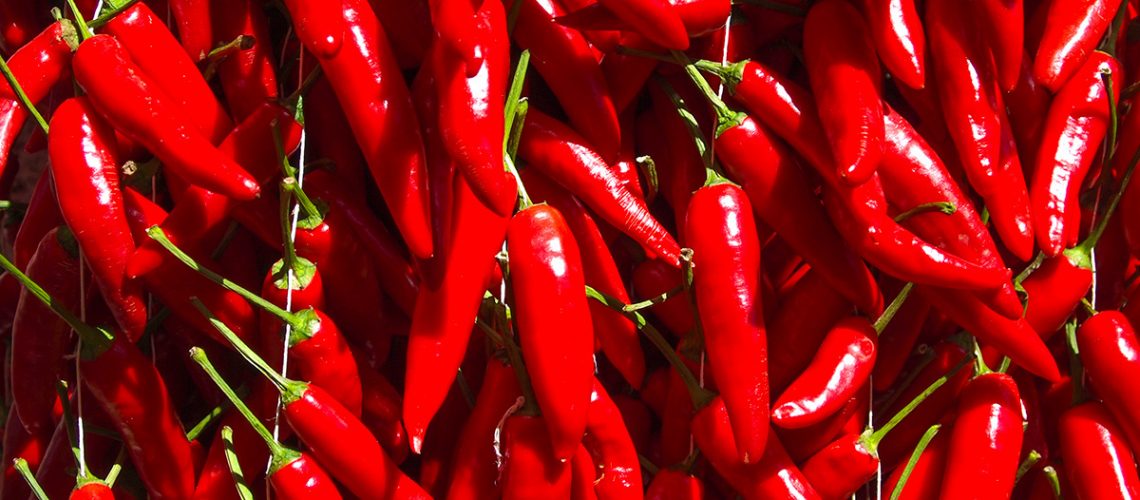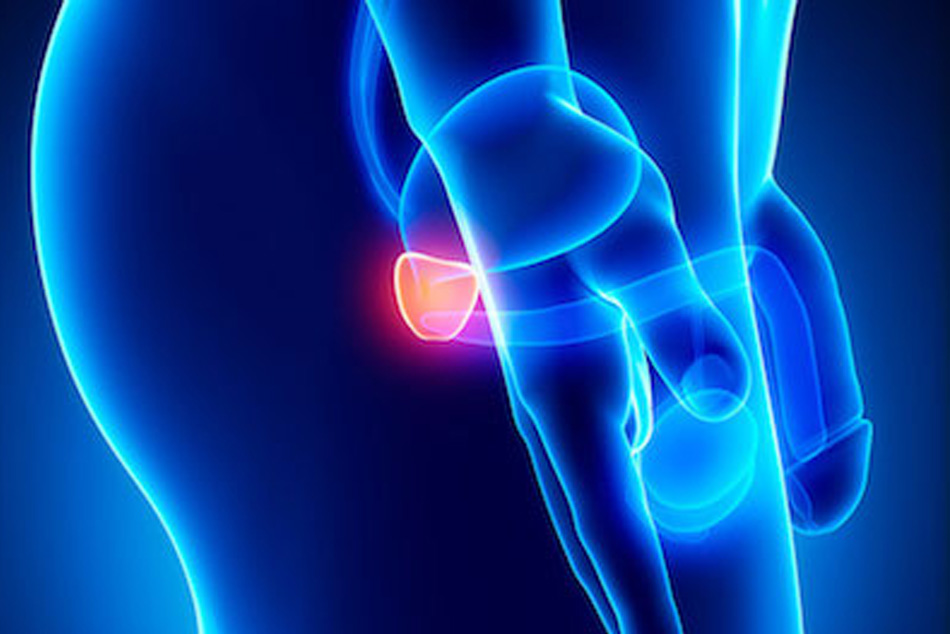Capsicum annuum. If the botanical name is unfamiliar to you, it will certainly ‘light up’ all your knowledge if we call it as it is commonly known: chili pepper. A variant that is certainly more common, however, which is also joined by green or yellow chilies, also typical of the Italian tradition, especially in the south of the country, white or brown. But do you know chili in depth: its origins, true and false curiosities, therapeutic properties (yes, because chili is really good for your health too), how to grow it? Wait until you find out much of what you don’t yet know about this spice.
Origins. Chili is a annual plant, belonging to the Solanaceae family, the same as potatoes, eggplant, tomatoes and tobacco, strange as it may seem. It originated on the American continent and entered Europe from here thanks to Christopher Columbus, who imported it and introduced it to the world upon his return from his second voyage from the New World. The description of the chili pepper seems a bit redundant, because we all know it, but know more about the fruit, perhaps less about the plant. This one has erect stems, white flowers and fruits (the chili pepper itself, in fact) with an oblong shape that change color depending on the stage of ripening: from green to yellow to bright red. Needless to say, its characteristic, that of the fruit, is the more or less heated spiciness due to the presence by capsaicina, an alkaloid (molecule) contained in varying concentrations depending on the variety, in the placenta, i.e., the white-colored inner membrane to which the seeds are attached, and not in the seeds alone as is usually believed, but also in the filaments located in the head of the fruit. This is why the tip of the chili is less spicy than the top/apex.
Measuring spiciness, you can. You may not have known it, but the degree of hotness of chili peppers can be evaluated with a special unit of measurement: the Scoville scale named after the chemist who invented it-Wilbur Scolville, an American-whose values traditionally range from 0 to 10 degrees. While Scoville Units (SU) measure the amount of capsaicin present in the fruit with values ranging from 0, in the case of a sweet bell pepper, up to the 16 million that is due to an all-capsaicin pepper: impossible and there’s even wishing you never eat it! To give you an idea of the degree of hotness, common chili peppers have a value of about 5 thousand, cayenne pepper 50,000 SU, Habanero considered until 2006 the hottest chili pepper in the world, almost 600 thousand. Why do we feel the spiciness? It is ‘the fault’ of capsaicin, which acts on the receptors on the tongue which perceived the substance spread a burning sensation, similar to that experienced when ingesting very hot food, but more persistent. Capsaicin activates receptors as if there were an actual temperature rise in the mouth, creating this unpleasant burning sensation. As strange and paradoxical as it may seem, once the acute burning phase has passed, our brain begins to produce endorphins, natural opiates that the body produces to quell pain and that once released give well-being. What can you do to alleviate this ‘spicy’ feeling? Certainly not drinking water as mistakenly done, but rather sipping a glass of wine, eating cheese, yogurt sauce or drinking milk since capsaicin is soluble in alcohol or fat, particularly casein. And this explains why in Mexican cuisine, which is very spicy and spicy, it is customary to accompany meals with sour cream, or in Indian cuisine with lassi, a yogurt-based drink. If you really do not have these foods on hand, you can resort to a slice of bread: chewing the crumbs in fact mechanically removes the capsaicin molecules from the receptors on the tongue, and the burning is relieved.
Practical preventive tips: If your chili is among the top on the Scoville Scale and you want to tone down the spiciness, soak it for an hour in vinegar and salt, in the proportion of 4/1. And pay attention to cooking: the longer it is, the more pronounced the spicy flavor becomes. Better yet: before using the chiles, strip them of the placenta, that is, the white filaments found near the stem and seeds.
(False) beliefs. What is true or what are the false myths about chili?
- Chili peppers make you slim: TRUE. Capsaicin also acts on receptors in the tongue, on some others located at the level of the brown adipose tissue, the so-called Bat, which among its functions also has the function of releasing fat in the form of heat. Capsaicin is able to promote this very process: the release of fat cells in the form of energy and temperature, thus preventing their storage. In addition, capsaicin reduces the secretion of ghrelin, a pancreatic hormone responsible for the feeling of hunger, thus decreasing food cravings. Finally, chili has the ability to speed up basal metabolism, which is the amount of energy the body needs on a daily basis to carry out ordinary activities, and allows it to ‘burn’ more.
- Chili is an aphrodisiac: TRUE (in part). In the collective imagination, this spice is associated with the ability to stimulate/increase desire and improve intimate performance. A conception that derives from pre-Columbian and Far Eastern folk beliefs that have always linked chili to the sexual sphere. And with this conviction, when it reached Europe, the Church identified chili as “arousing insane intentions,” therefore to be banned. From a biological point of view, capsaicin causes vasodilation and thus can also act sexually; in addition, chili peppers contain vitamin E, which stimulates libido and promotes fertility in both sexes: hence the ‘concept’ that it is an aphrodisiac substance.
Species. In nature there are about 3 thousand varieties of chili peppers of which there are five most common:
- Capiscum annuum: the classic chili bell pepper, a family to which sweet peppers also belong, however, and which includes many common varieties, such as cayenne pepper and the famous Mexican chili pepper Jalapeño. It is a species with a very dry aroma and fast growth and ripening.
- Capiscum frutescens: compact and very productive plants that do not present particular difficulties in cultivation. The most famous is Tabasco pepper, the main ingredient in the famous Tabasco Sauce.
- Capiscum chinense (actually native to the Amazon): the hottest varieties ever, such as Habanero and Carolina Reaper chiles, are part of this species. The plants are now grown anywhere in the world where there is a high level of humidity. Growth is slow and fruit flavor is strong (high spiciness) and fruity.
- Capiscum pubescens: can be distinguished from all other species by its black seeds and their shape similar to an apple or pear. Among the most famous varieties are Locato and Rocoto.
- Capiscum baccatum: all varieties have South American origins and are characterized by medium to high spiciness. Aji Amarillo is the prince ingredient of Bolivian and Peruvian cuisine.
In Italy the most common are as follows:
- Common hot pepper (Capsicum annuum): Has a low level of spiciness and does not exceed 2 inches in length. In Italy, of this species, the Friggitello bell pepper, with a sweet flavor, which is widely used especially in southern cooking, and the Calabrian chili pepper are widely grown.
- Cayenne pepper: has a higher degree of hotness, is thinner and more elongated in shape, and can reach 10 cm in length. It is mainly grown in southern Italy, especially in Campania and Calabria.
- Satan kisses: are characterized by their small size and cherry-like shape crushed at the tip. They are eaten stuffed and are typical of the South.
- Jalapeno: Mexican chili pepper, has small size (between 4 and 7 cm) and low spiciness ranging from 2,500 to 10,000 SU. It is consumed while still green to enhance its aroma, and is very versatile in cooking.
- Poblano: one of the best-known Mexican chilies. It resembles a miniature bell pepper, but is spicy and has a length between 7-15 cm. It is harvested green to enhance its crispness and limit its spicy flavor. It is typical of Mexican recipes such as chiles rellenos, made with stuffed and fried poblano.
- Habanero: also Mexican, it has about 577,000 SU. It also exists in yellow, orange, white and brown varieties, which are equally spicy(ssimi), with a characteristic lantern shape ending in a slightly elongated tip. They can reach up to 8 cm in length and can be found in Italy today.
- Hot lemon pepper or Lemon Drop: bright yellow, citrus flavor, just enough spiciness and perfect even for those who do not like too much spiciness. It fits perfectly in vegetable gardens, balconies and dishes to which it will give color.
Chili facts: are you sure you know everything about chili? Find out.
- The Latin name “Capsicum,” is said by some to be derived from “Capsa ” meaning box, referring to the shape of the fruit that holds seeds inside. For others, however, it comes from the Greek word “kapto” meaning to bite, referring to the pungency of the fruit that “bites” the tongue when consumed.
- Capsaicin was an ‘invention’ of nature, which endowed the plant with this substance to ensure the survival and reproduction of chili peppers, that is, to keep mammals ‘away from the tasting’ through the spicy flavors, which would eat the seeds, destroying them through digestion, without having them produced. While perhaps chili peppers survived thanks to birds that were immune to capsaicin, not having receptors sensitive to the substance, favored dispersing the seeds through feces after ingesting and digesting them.
- At the time of Christopher Columbus, when the spice was introduced to Europe, it did not ‘make a fortune’ among the nobility contrary to expectations and the desire to make a profit from its trade, due to the strong spicy flavor not liked by all. It was also discovered that the spice could take root easily in European crops as well. Instead, it became “the poor man’s spice”: the poorer classes employed chili peppers to enhance and impart flavor to their poor dishes, and thanks to its antibacterial properties they were also able to preserve food longer.
- In addition to cooking, the ancient Maya also exploited the therapeutic properties of chili peppers to treat themselves, such as for inflammation or toothache, while in ancient Peru it was used as currency.
- The use of chili peppers as a defensive weapon, like the capsaicin sprays employed today, are not a ‘novelty.’ In fact, the Incas used to burn hot peppers on the battlefield when the wind was favorable, so that the smoke could temporarily blind enemies, giving them time to flee or organize defense.
- Chili pepper was considered a good luck talisman by many Indian tribes. In the past, many merchants when work went wrong resorted to a kind of superstitious ritual of putting chilies wrapped in a cloth and offering it to the gods, who in turn grateful for the offering would ‘reciprocate’ them by helping them with their work. In the central valley of Mexico, where descendants of the ancient Aztecs live, newborns are protected from misfortune with a cross formed by a chili pepper and a sprig of the same plant that must be placed under the mat where the mother and child sleep. If in spite of this, the child becomes ill, the parents should obtain a chili from four different vendors before starting treatment, so that their stores are arranged in the shape of a cross. Again: many Indian tribes in North and SouthAmerica used chili peppers as currency for their trade and as a talisman capable of protecting against evil, so they tied garlands of chili peppers to their canoes to ward off evil water spirits. Even today, in Calabria and Abruzzo, it is traditional to hang wreaths of chili peppers in the home to ward off enemies and the evil eye.
- Capsaicin in ancient times was also used to dye cloth and carpets and give them a beautiful red color. While it seems that some farmers and ranchers used to mix chili into the hens’ feed to get eggs with a yolk that was more yellow. Today capsanthin is chemically extracted and used as a natural dye in some foods.
Tips for use. To get in more (health) benefits from chili peppers, here are some tips:
- It is good to consume it no more than twice a week and not to eat it on an empty stomach.
- It is recommended to use it in modest amounts within meals that also include fruits, vegetables and light dairy products that protect mucous membranes.
- Be careful when handling the spicier species, using gloves, then washing your hands thoroughly.
Cultivation. Chili peppers are one of the most popular spices in the world because of the seeds that are easy to store, last over time, and are able to germinate even after 3 years. In addition, the chili pepper plant takes root easily, even on the balcony or in the vegetable garden, however, it requires care. Starting with attention to:
- Sowing: should take place in February/March, depending on the climate. Better to germinate seeds in seedbed in a heated environment, then plant them when the weather is warmer, around April/May. The soil should be loose, perhaps with a sandy component to promote water drainage and avoid water stagnation.
- Temperature: greatly affects the growth and fruiting of the plant. For example, a chili grown at 29-30°C temperature will be hotter than one grown at 23-25°C. The temperature, in general, should never fall below 10-12°C ( with temperatures below 4°C the plants suffer irreversible damage) and never exceed 30°C. Changes in temperature can also impact the final appearance of the fruit: a reduction in degrees centigrade contributes to a more elongated and pointy pepper. In short, to grow and mature well, chili peppers need warmth but also a lot of light.
- Light: only in the initial germination stage does the plant require a dark environment to facilitate the seed maturation process, thereafter it should be exposed to sunlight or light emanating from LED lights. Chilies need an average of 18 hours of light per day during the growing period and 12 hours during the flowering period.
- Ideal terrain: must contain more than 50 percent sand and a reduced clay content, that is, it must not be too compact, and have a slightly acidic pH of 4.5 to 6.5 pH. It must also contain a large amount of organic matter and nutrients to increase fertility and drainage (stagnant water ruins the plant, remember?).
- Irrigation and fertilization: Insufficient amounts of water also affect the quality and quantity of the crop. Prolonged water shortage can promote flower and berry drop, and cause irreversible damage to the plant. In addition, soil that is too dry prevents the uptake of phosphorus and potassium, which are essential to ensure proper nutrition for the plant. On days when the temperature is very high, the potting soil will tend to dry out, forming a kind of crust on the surface that slows the passage of air to the roots. In such cases, it is necessary to break up the dry layer of soil, scrape and loosen the potting soil with a fork or stick, and water it at the end of the day, after sunset so as to ensure that the plant grows regularly. In general, remember that watering should be done only when the soil is well dry and in the upper layers. The use of fertilizers is usually not necessary, while initial fertilization is very important. Better to use a good ternary granular mineral fertilizer poor in nitrogen and complete with trace elements, trying to intervene never too close to the stem and roots. Products containing Nitrate, Phosphorus and Potassium, abbreviated NPK, are also indicated.
Growing chili peppers indoors. It is advisable to opt for this mode if you live in a rather cold area, where plants would have a hard time, or if you want to anticipate cultivation and get chili fruits even before the hot season arrives. In this case, after choosing the variety of chilies to grow, make sure you have:
- plastic trays with lids that will need to be labeled with the names of the chosen chile varieties so that no mistakes are made and the seedlings can be recognized;
- rockwool cubes all with plenty of pH-controlled water, or alternatively they should be soaked and allowed to soak for 24 hours so that the water can soften all the fibers, after which they should be squeezed and sprayed with the nutrient solution. Or you can use already fertilized universal potting soil or even growing peat.
- With both pot cultivation and in-ground cultivation techniques, it is recommended to use supports for plants exceeding 35cm in height.
Once the plastic germination trays are filled with one of the above solutions, spray the potting soil with boiling water before inserting the seeds so as to set up a warm and cozy environment. After a few minutes and when the soil is warm, start planting the seeds by drilling holes a few millimeters deep with a stick or old pen. Once placed inside, cover them with a thin layer of soil (or gently close the rockwool cubes). When this is done, close the germination box with the appropriate lid, making sure that the ventilation holes are open and guarantee a temperature around 25-30°C, which should be monitored with a digital device with an external sensor, which should be placed in the germination box, directly in the soil, right at the height of the seeds.
- The first signs of seedling life will occur as early as 6-7 days after planting. At this point it will be necessary to move the trays under a fluorescent tube, making sure that the distance between the light and the top of the plants is about 5-8 cm for the first two weeks and 2-4 cm thereafter. While to promote aeration, a fan should be added to the room to cool the tubes and further strengthen the young seedlings. To ensure proper irrigation, use a drip system: the nutrient solution can be administered once or several times during the day, while once a week simply irrigating with pH-controlled water will suffice in order to remove any residue.
- Fertilize when the plants (soil) are dry, never after heavy watering. If excessive, however, it causes major problems to the roots and leaves, which will tend to yellow.
- When the plants begin to flower, it is a good idea to remove a few flowers from time to time so that the plant can supply all the energy to the remaining flowers-this will result in larger, pulpier fruit. If, however, the plants are for ornamental purposes you can leave all the flowers on the plant.
- When the plant has reached a significant size, it will be necessary to transfer it to a larger cube: one of the advantages of rockwool is precisely the possibility of placing the cube initially used for germination inside a larger cube dedicated to the growth of the plant, to be then placed on a special tray.
Insecticide spicy. Chili peppers can be a valuable remedy against insects and pests. In fact, a natural insecticide can be prepared by crushing a few low-pitched cayenne peppers and 2 or 3 cloves of garlic, then placing the resulting mixture in a liter of water. Add a tablespoon of dish soap and let it macerate for 2-3 days, then strain the mixture and spray directly on the leaves of diseased plants. Caution: always use a mask and gloves when handling the insecticide.
****
Pests and Diseases. Chili peppers fear attack by pests and fungi. Particularly among the pests is the red spider mite, which stings mainly the leaves which, once attacked, turn a typical bronze color and form a kind of spider web. To eradicate it, it is essential to remove plants that have already been attacked and treat the crop with acaricides; the green aphid, attacks leaves promoting their progressive yellowing and tendency to curl. To combat aphids, you can use ladybugs, which feed on aphids, by placing, for example, next to the cultivation of chili peppers, fennel, carrots or dandelion, which ladybugs are greedy for. Or you can treat affected plants with Marseille soap, diluting a handful in 10 liters of water and spraying it on the plants, or with Neem oil, a natural repellent that is effective, easy to apply and not harmful to humans, to be diluted (20 grams for every 10 liters of water) and sprayed into standing water found in saucers (but also in gutters, water pots with flowers, containers that house water, etc.). This prevents mosquito larvae from developing and turning into annoying insects. Finally, Pseudomonas Solanacearum, a bacterium that causes yellowing and necrosis on leaf edges and the emergence of adventitious roots on the plant stem. If it is affected, the crop should be treated with copper-based products.
Among the fungi, on the other hand, the following are aggressive to the plant
Phytophtora capsici
(phytophtora or pedal gangrene), which can affect the entire plant, and especially the collar and roots, at any time during its growth. It manifests as small, light green spots that tend to gradually enlarge and darken to resemble mold. The fungus can be prevented by avoiding water stagnation and promoting proper soil drainage; if it does occur, it must be eradicated with special fungicides. The
Verticillium Dahliae
(verticillosis) attacks roots and stem, causing them to become occluded and preventing the passage of vital sap, this causes progressive plant death and infection of the surrounding soil. In fact, this fungus survives in the soil for several years, and to eradicate it, sterilization is essential. Again, it can be prevented by avoiding water stagnation and ensuring that the crop is properly aerated (in cases where plants are indoors or in a greenhouse), while permanently eliminating plants that are already affected. Finally, the
Fusarium vasinfectum
and the
Fusarium solani
: are very aggressive and dangerous fungi; attacked plants will develop a weak and small stem, while the main root will develop few and weak rootlets. The leaves of the plant will be subject to necrosis, while the fruits will grow but remain small and irregularly shaped. In these cases, treatments are rather ineffective, so it is worthwhile to constantly monitor the cultivation to prevent these enemies from coming over.




















































































